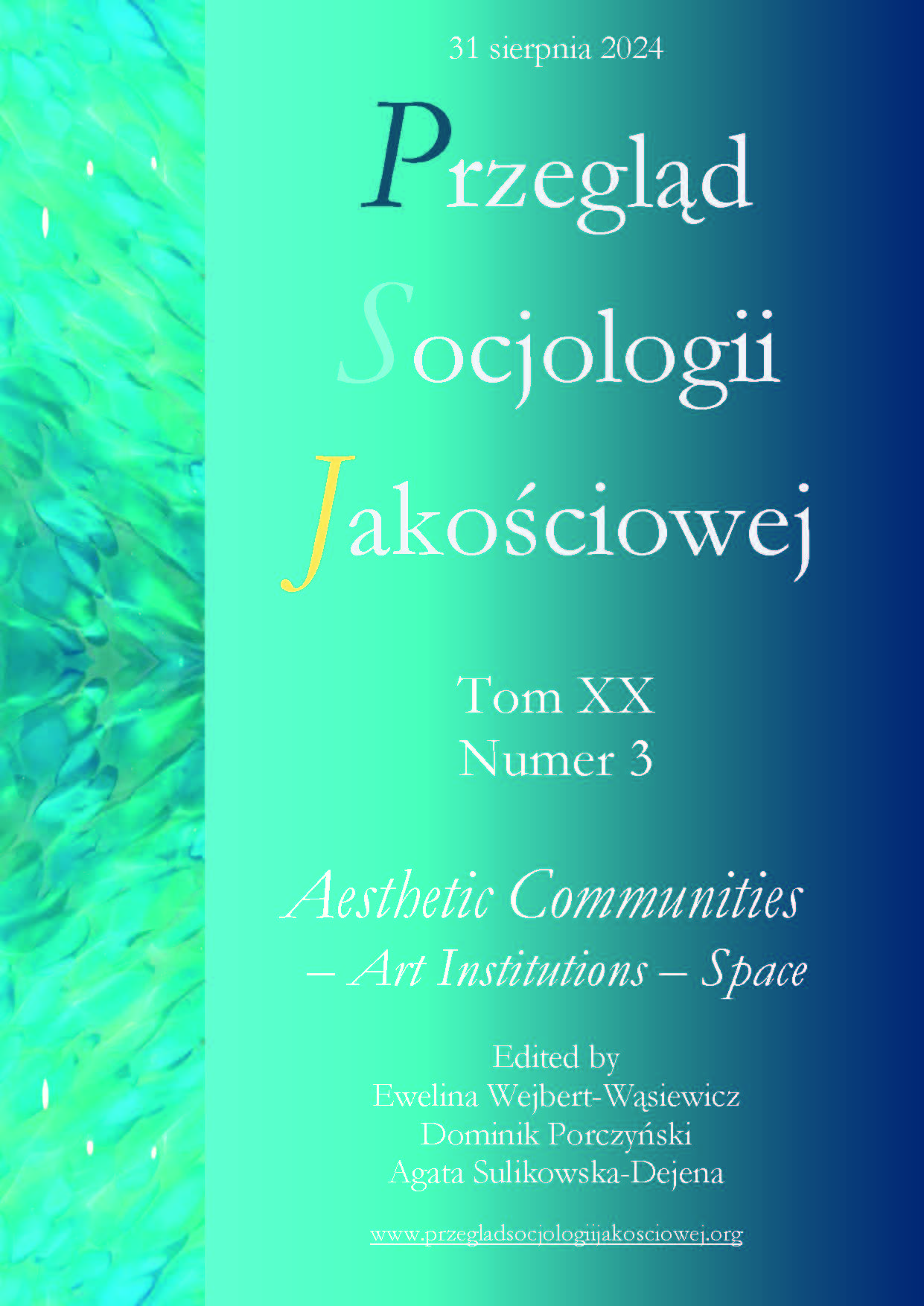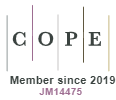A Space of Choice: Exploring New Patterns of Common Student Spaces
DOI:
https://doi.org/10.18778/1733-8069.20.3.07Keywords:
architecture, common space, participatory design, pattern language, student workshopsAbstract
The paper describes a project conducted by a group of architecture students at the Cracow University of Technology. The research problem focused on common spaces in the learning environment, employing the theoretical framework of the sociology of architecture and the participatory design methodology. The project aimed to propose current design model solutions for inclusive and universally-accessible student places, reflecting on the initial studies and the design workshop experiences. The socio-spatial patterns proposed in this study were inspired by the concept of a pattern language developed by the team led by Christopher Alexander in the 1970s. In contrast to the original patterns, the new proposals for patterns of common student spaces are not statements, but questions. The answers to these questions involve different relationships between individuals (users) and the built environment, including those connecting users to the architectural work, the natural environment, other individuals, or user groups.
Downloads
References
Alexander Christopher, Ishikawa Sara, Silverstein Murray, Jacobsen Max, Fiksdahl-King Ingrid, Angel Shlomo (1977), A Pattern Language: Towns, Buildings, Construction, New York: Oxford University Press.
Google Scholar
Alexander Christopher, Ishikawa Sara, Silverstein Murray, Jacobsen Max, Fiksdahl-King Ingrid, Angel Shlomo (2008), Język wzorców: miasta, budynki, konstrukcja, translated by Aleksandra Kaczanowska, Karolina Maliszewska, Małgorzata Trzebiatowska, Krzysztof Lenartowicz, Gdańsk: Gdańskie Wydawnictwo Psychologiczne.
Google Scholar
Ankerl Guy (1981), Experimental Sociology of Architecture: A Guide to Theory, Research and Literature, The Hague–Paris–New York: Mouton Publishers.
Google Scholar
Banach Jerzy (1983), Dawne widoki Krakowa, Kraków: Wydawnictwo Literackie.
Google Scholar
Bauman Zygmunt (2000), Globalizacja, Warszawa: Państwowy Instytut Wydawniczy.
Google Scholar
Becker Howard S. (1967), Whose Side are we on?, “Social Problems”, vol. 14(3), pp. 239–247.
Google Scholar
Becker Howard S. (1982), Art Worlds, Berkeley–Los Angeles–London: University of California Press.
Google Scholar
Betsky Aaron (1990), Violated Perfection: Architecture and the Fragmentation of the Modern, New York: Rizzoli.
Google Scholar
Blumer Herbert (1969), Symbolic Interactionism: Perspective and Method, Berkeley–Los Angeles–London: University of California Press.
Google Scholar
Brzozowska Blanka (2017), Miejskie tłumy. Miasto i wspólnotowość w dobie sieciowej współpracy, Łódź: Wydawnictwo Uniwersytetu Łódzkiego.
Google Scholar
Canepa Elisabeta, Scelsi Valter, Fassio Anna, Avanzino Laura, Lagravinese Giovana, Chiorri Carlo (2019), Atmospheres: Feeling Architecture by Emotions. Preliminary Neuroscientific Insights on Atmospheric Perception in Architecture, “Ambiances”, vol. 5, pp. 1–28.
Google Scholar
Chmielowski Franciszek (2000), Obecność ekologicznego myślenia w sztukach plastycznych, [in:] Maria Gołaszewska (ed.), Poznanie i doznanie: eseje z estetyki ekologii, Kraków: Universitas, pp. 178–194.
Google Scholar
Cymer Anna (2016), Maciej Siuda, https://culture.pl/pl/tworca/maciej-siuda [accessed: 9.02.2024].
Google Scholar
Durkheim Émile (1999), O podziale pracy społecznej, translated by Krzysztof Wakar, Warszawa: Wydawnictwo Naukowe PWN.
Google Scholar
Fine Alan (2004), Everyday Genius. Self-Taught Art and the Culture of Authenticity, Chicago–London: University of Chicago Press.
Google Scholar
Fortry Adrian (2000), Words and Buildings: A Vocabulary of Modern Architecture, London: Thames & Hudson.
Google Scholar
Goffman Erving (1963), Behavior in Public Places: Notes on the Social Organization of Gatherings, New York: The Free Press.
Google Scholar
Goffman Erving (2000), Człowiek w teatrze życia codziennego, translated by Helena Datner-Śpiewak, Paweł Śpiewak, Warszawa: Wydawnictwo KR.
Google Scholar
Grabowski Ambroży (1822), Historyczny opis miasta Krakowa i iego okolic, Kraków: Józef Matecki.
Google Scholar
Hanington Bruce (2018), Empathy, Values, and Situated Action: Sustaining People and Planet Through Human Centered Design, [in:] Rachel Beth Egenhoefer (ed.), Routledge Handbook of Sustainable Design, New York: Routledge, pp. 193–218.
Google Scholar
Hansen Oskar (2005), Zobaczyć świat, Warszawa: Zachęta Narodowa Galeria Sztuki.
Google Scholar
Hillier Bill (1996), Space is the Machine: A Configurational Theory of Architecture, Cambridge: Cambridge University Press.
Google Scholar
Jałowiecki Bohdan (2005), Społeczny język architektury. Od gotyckiej katedry do hipermarketu, [in:] Bohdan Jałowiecki, Andrzej Majer, Marek S. Szczepański (eds.), Przemiany miasta. Wokół socjologii Aleksandra Wallisa, Warszawa: Wydawnictwo Naukowe Scholar, pp. 21–36.
Google Scholar
King Anthony D. (2003), Introduction, [in:] Anthony D. King (ed.), Buildings and Society: Essays on the Social Development of the Built Environment, London: Routledge, pp. 1–33.
Google Scholar
Knorr-Cetina Karin (1981), The Manufacture of Knowledge: An Essay on the Constructivist and Contextual Nature of Science, Oxford: Pergamon Press.
Google Scholar
Kościuk Jacek, Sławińska Jadwiga (2000), Ład, chaos i architektura, “Architectus”, vol. 2(8), pp. 55–60.
Google Scholar
Lasiewicz-Sych Angelika (2016), Kreacja miejsc a forma otwarta: problem aktywnej percepcji w architekturze, “Kultura i Historia”, vol. 30, pp. 90–105.
Google Scholar
Latour Bruno (2010), Splatając na nowo to co społeczne. Wprowadzenie do teorii aktora-sieci, translated by Aleksandra Derra, Krzysztof Arbiszewski, Kraków: Universitas.
Google Scholar
Lefebvre Henri (1993), The Production of Space, [in:] Neil Leach (ed.), Rethinking Architecture: A Reader in Cultural Theory, London–New York: Routledge, pp. 139–146.
Google Scholar
Łukasiuk Magdalena (2011), Socjologia architektury w badaniach krajobrazu kulturowego miasta, “Przegląd Socjologiczny”, vol. 60(2), pp. 93–109.
Google Scholar
Łukasiuk Magdalena (2017), Interakcje z architekturą. Społeczne sprawstwo zabudowy, “Kultura Popularna”, vol. 2(52), pp. 44–54.
Google Scholar
Nancy Jean-Luc (2010), Rozdzielona wspólnota, translated by Michał Gusin, Wrocław: Wydawnictwo Naukowe Dolnośląskiej Szkoły Wyższej.
Google Scholar
Paetzold Heinz (2000), Symbol, Culture, City. Five Exercises in Critical Philosophy of Culture, Maastricht: Jan van Eycke Akademie.
Google Scholar
Park Robert E. (1928), Human Migration and the Marginal Man, “American Journal of Sociology”, vol. 33, no. 6, pp. 881–893, https://doi.org/10.1086/214592
Google Scholar
Ptak Anna (2018), Wszechświat mówi do nas językiem architektury, [in:] Anna Ptak (ed.), Amplifikacja natury. Wyobraźnia planetarna architektury w epoce antropocenu, Warszawa: Zachęta Narodowa Galeria Sztuki, pp. 21–34, https://labiennale.art.pl/wp-content/uploads/2023/03/Amplifikacja-natury-Biennale-2018-_web.pdf [accessed: 8.02.2024].
Google Scholar
Rewers Ewa (2005), Miasto jako przestrzeń kulturowa, [in:] Bohdan Jałowiecki, Andrzej Majer, Marek S. Szczepański (eds.), Przemiany miasta. Wokół socjologii Aleksandra Wallisa, Warszawa: Wydawnictwo Naukowe Scholar, pp. 83–94.
Google Scholar
Sanoff Henry (1999), Integrowanie programowania ewaluacji i partycypacji w projektowaniu architektonicznym. Podstawy teorii Z, translated by Augustyn Bańka, Aleksander Hauziński, Poznań: Wydawnictwo Naukowe Stowarzyszenia Psychologia i Architektura.
Google Scholar
Sennet Richard (2013), Razem. Rytuały, zalety i zasady współpracy, translated by Jan Dzierzgowski, Warszawa: Wydawnictwo Literackie Muza.
Google Scholar
Simmel Georg (1999), The Metropolis and Mental Life, [in:] Neil Leach (ed.), Rethinking Architecture: A Reader in Cultural Theory, London: Routledge, pp. 69–79.
Google Scholar
Sowa Jan (2014), Miejsca przecięcia, [in:] Bogna Świątkowska (ed.), My i oni: Przestrzenie wspólne / Projektowanie dla wspólnoty, Warszawa: Fundacja Bęc Zmiana, pp. 44–52.
Google Scholar
Strauss Anselm L. (1993), Continual Permutations of Action, New York: Aldine de Gruyter.
Google Scholar
Szmidt Bolesław (1981), Ład przestrzeni, Warszawa: Państwowy Instytut Wydawniczy.
Google Scholar
Szpyt Maksymilian, Piotr Pikulski (2016), Niezbadane losy Pałacu w Łobzowie za czasów Jana III Sobieskiego, “Journal of Heritage Conservation”, vol. 48, pp. 119–124.
Google Scholar
Świątkowska Bogna (2018), Niewielka rola centralnej ręki, “Notes Na 6 Tygodni”, no. 48, pp. 98–111, https://issuu.com/beczmiana/docs/notes48_internet/37 [accessed: 8.02.2024].
Google Scholar
Tschumi Bernard (1987), Architecture and Disjunction, Cambridge–London: MIT Press.
Google Scholar
Walter James (1985), Order and Chaos in Landscape, “Landscape Research”, vol. 10(1), pp. 2–8.
Google Scholar
Welsch Wolfgang (2005), Estetyka poza estetyką. O nową postać estetyki, translated by Katarzyna Guczalska, Kraków: Polskie Towarzystwo Estetyczne.
Google Scholar
Wolniak Radosław (2017), The Design Thinking Method and Its Stages, “Systemy Wspomagania w Inżynierii Produkcji – Inżynieria Systemów Technicznych”, vol. 6(6), pp. 247–255.
Google Scholar
Yaneva Albena (2009), Making the Social Hold: Towards an Actor-Network Theory of Design, “Design and Culture”, vol. 1(3), pp. 273–288, https://doi.org/10.1080/17547075.2009.11643291
Google Scholar
Yaneva Albena (2017), Five Ways to Make Architecture Political. An Introduction to the Politics of Design Practice, London: Bloomsbury Publishing, https://doi.org/10.5040/9781474252386
Google Scholar
Zeisel John (1984), Inquiry by Design: Tools for Environment-Behavior Research, Cambridge–London–New York–New Rochelle–Melbourne–Sydney: Cambridge University Press.
Google Scholar
Znaniecki Florian (1971), Nauki o kulturze, Warszawa: Państwowe Wydawnictwo Naukowe.
Google Scholar
Published
Versions
- 2024-10-14 (2)
- 2024-08-31 (1)
How to Cite
Issue
Section
License

This work is licensed under a Creative Commons Attribution-NonCommercial-NoDerivatives 4.0 International License.














